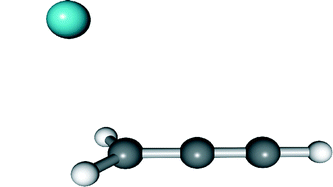Explicitly correlated coupled cluster calculations for the propargyl cation (H2C3H+) and related species†
Abstract
The vibrations of the propargyl

* Corresponding authors
a
Institut für Physikalische Chemie, Universität Göttingen, Tammannstraße 6, 37077 Göttingen, Germany
E-mail:
pbotsch@gwdg.de
Fax: +49 551 39-3144
Tel: +49 551 39-3133
b Institut für Theoretische Chemie, Universität Stuttgart, Pfaffenwaldring 55, 70569 Stuttgart, Germany
The vibrations of the propargyl

 Please wait while we load your content...
Something went wrong. Try again?
Please wait while we load your content...
Something went wrong. Try again?
P. Botschwina, R. Oswald and G. Rauhut, Phys. Chem. Chem. Phys., 2011, 13, 7921 DOI: 10.1039/C1CP20206E
To request permission to reproduce material from this article, please go to the Copyright Clearance Center request page.
If you are an author contributing to an RSC publication, you do not need to request permission provided correct acknowledgement is given.
If you are the author of this article, you do not need to request permission to reproduce figures and diagrams provided correct acknowledgement is given. If you want to reproduce the whole article in a third-party publication (excluding your thesis/dissertation for which permission is not required) please go to the Copyright Clearance Center request page.
Read more about how to correctly acknowledge RSC content.
 Fetching data from CrossRef.
Fetching data from CrossRef.
This may take some time to load.
Loading related content
